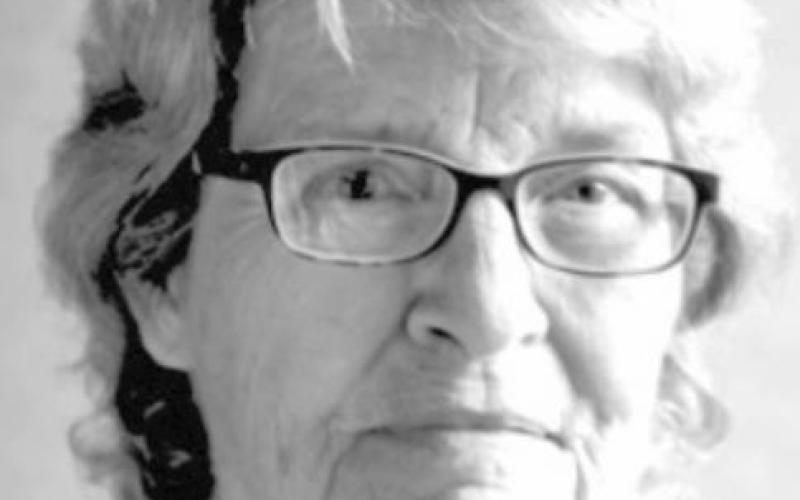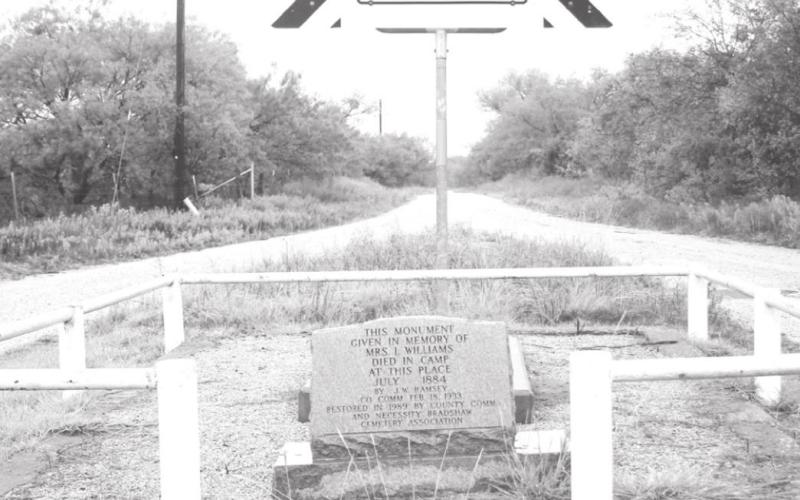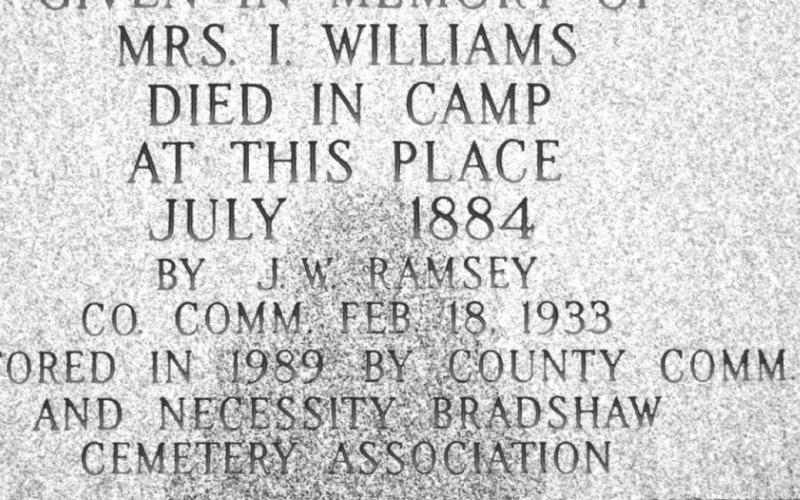‘Grave in the middle of the road’ clarified
The Necessity history cannot be told without explaining the ‘Grave in the middle of the road.’
First off, Necessity is said to maintain the largest cemetery in Stephens County, but one of the most significant graves at Necessity is the ‘grave in the middle of the road.’ It is located just beyond the intersection of two Farm to Market Roads, No. 207 and No. 576 East. Obviously, this type of landmark would draw some curious visitors from time to time.
The mystery surrounding the grave has been a topic of many discussions and many curious passers-by have questioned the location and how it happened.
What was the story behind someone placing a grave in the middle of the road? Actually, whoever dug the grave and buried the loved one, didn’t locate the gravesite in the middle of the road. The grave was originally placed on the side of a trail westward in the open prairie, but many years later, when it became a well-traveled road, it required widening and that created the ‘Grave in the middle of the road.’
It wasn’t until the 1930s, when County Commissioner, J.W. Ramsey, was serving in Stephens County that he took it upon himself to do something more permanently to preserve the gravesite. He decided to place a concrete tomb over the grave to protect it.
Originally, there was a very dim inscription that identified the person buried there as a Mrs. I. Williams. The story that was told, at the time, was that the family’s wagon was traveling from east Texas to somewhere further west as part of a wagon train. The re-location of the family was for her health and their wagon was part of the wagon train which was traveling through open prairie much before any kind of permanent road was in place. That would explain burying her there and leaving it behind to keep up with the wagon train going west. Unfortunately, she died near the area that later became Necessity. The family had buried her in open prairie along the trail they were traveling westward. One story is that she died in childbirth and was buried with her baby. No one is sure if the family continued further west or returned to their origin. However, what if they had sold everything to make the trip and there was nothing to return to? Either way, the family apparently never returned or if they did, they may not have been able to find the place where they buried their loved one. The mystery is still unsolved but she has a permanent grave that has been lovingly preserved, in the middle of the road, near Necessity.
Charlcy and Ken Sandifer clarified some of the stories. They have strong ties to the town of Necessity. Charlcy said her parents were Rankin and Ethel (Haskins) Williams who had moved the family to Necessity shortly before she was born. Her grandparents’ story differed a bit and had them moving to Necessity when her mother was age 13. At that time, many of the older residents called it by the original name of Mountain Valley, but by 1909, the town was referred to as Cotton Plant and soon after that, the town became known as Necessity. There were six children in the Williams household and the youngest was born in Necessity in 1911. The four oldest went to the Mountain Valley School and her grandfather, Mobile Augustus “Gus” Haskins, served as a Trustee for the Mountain Valley School District.
Her grandfather owned the property on the east side of FM Road 207, adjacent to the grave of Mrs. I. Williams. As a child, Charlcy never thought it odd that there was a grave in the middle of the road or lane.
At some point, the grave was covered with a rock enclosure and rock curbing. Eventually, the rock deteriorated beyond repair and the Stephens County workers put a pipe railing around it, which was restored in 1989. Charlcy said that everyone agrees that the family was traveling westward in a wagon train long before there was any kind of permanent road. It would have been in the wide-open spaces, unoccupied land with no established towns near their route.
In 1933, records indicate that her dad’s brother, Dalton Williams, bought the property beside the ‘grave in the road.’ His son, Dick Wil-liams, has the records to document that transaction. Later, when the land was surveyed and sold in tracts, Charlcy’s grandfather, ‘Gus’ Haskins purchased the 149 and a half acres located along what is now known as FM 207 and the Bradshaw Cemetery Road, also known as Rosenquest Road. At that time, the grave was on his land.
At some point, a Stephens County road crew either laid out the road running along the south tract, or they may have relocated what had been the existing road. Her cousins told her that the Stephens County workers had moved the road to the south causing the grave to be located in the middle of the existing road and no longer on her grandfather’s tract of land.
So there you have it. It was open prairie land with no established road and no nearby town where she could have been taken to be buried properly.
I have forgotten. I promised to tell the story about the obscure bank vault sitting out in an open field near Necessity. Tune in next week and see if I have found that information. Contact Jean Hayworth at office@breckenridgeamerican.com.
- Log in to post comments




